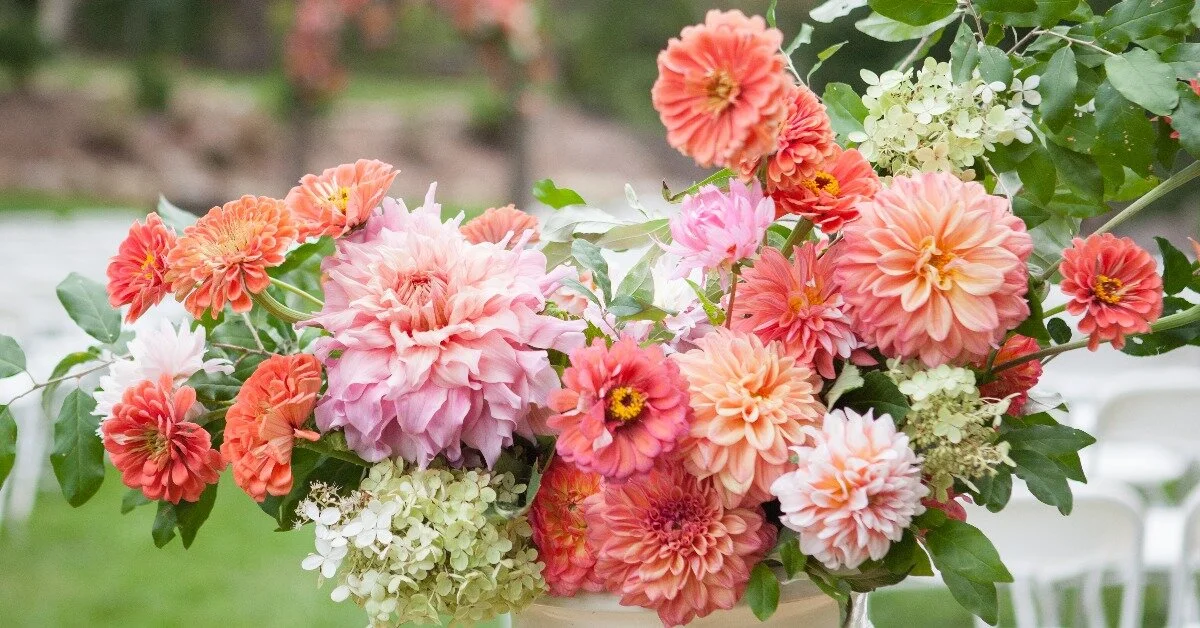Member Roundup: Selecting Seeds and Bulbs
For many, it's that time of year when you start to plan for what flowers you will grow in the upcoming season. This process involves countless seed catalogs, website visits, number crunching and more! We reached out to just a few of the flower growers that are a part of Team Flower to get their advice on planning for a new growing season.
Paula Rice of BeeHaven Flower Farm
When searching for seed or plants that qualify as good cut flowers, there are a few things to ask yourself. First of all, how tall does it get? Personally, I like things to be 24+ inches, but I do grow things that are between 14 to 18" if it is really what I want and there are no other options. I also ask myself, is it an annual (blooms the same year as seeded), a perennial (grows the first year and typically blooms the second year and thereafter), or a biannual (grows the first year, blooms the second year and then dies)?
Make sure you buy seed for annuals and not perennials. Most perennials take one full year (season) to grow and will bloom the second year. This is fine, but you just need to be aware of that. The exception to this is if it happens to be a perennial that does not require vernalization (a cold spell) and will bloom its first year. There are lots of these candidates out there, and you can treat them as annuals. An example would be Achillea millefolium F2 'Summer Berries' (Cottage Yarrow).
Two great sources for smaller amounts of seeds are at Johnny's Seeds and Harris Seeds.
Martha White of FreeRangeFlowers
Belonging to ASCFG is essential to keep up with new varieties of things to try each season. From an ASCFG Regional Conference, we learned about GeoSeed - a source for well-priced seeds for cut flowers. There are no pictures, but excellent descriptions. This is the vendor we use first, and only order those things from other sources that they don't have.
Kathleen Murphy of Primrose Hill Flower Company
For a new season, I order probably 70% of what I've grown before and experiment with about 30% new seeds. That ratio provides enough 'tried and true' while giving me the opportunity to experiment with new varieties. When ordering, it's important to look at other photos of the plant. Often a plant will look gorgeous in a particular magazine picture or seed catalog, but when I look at it in other photos, I find I am not that crazy about it. Based on what I find, I either place it on my order list or scrap the idea. I set aside 2-3 days to do my orders, and I make myself do it all at once. I also make a note of where each item ordered will be planted. This keeps me from impulse buying (most of the time).
Pressly Williams of Renfrow Farms
I have found the best way to make my seed selections each year is to record everything into a spreadsheet as I browse the catalogs. This process makes adding and subtracting items very easy, and I have columns that track of the quantity of seeds per pack, price, and seed source. This also helps me to stick better to my budget and not go absolutely wild over all of the new varieties I want to try. Every year I use this same spreadsheet and keep records of my previous orders. I just add a new page to the same spreadsheet with each new order. This helps when it comes to my planting schedule each season as well!
Christy Muck of Wild Blossom Hollow
When it comes to bulbs, make sure you order a good 6-7 months before you need to plant them. Spring bulbs need to be ordered in the spring and then planted in late fall. Also, try and find local bulb companies instead of going to big box stores or bulb/seed catalogs. Holland Bulb Farm as well Dutch Grown are great companies if you aren't planting wholesale bulbs. For seeds, make sure you research what you are ordering first such as germination period as well as if they are a cut flower, perennial, annual or biannual. Make sure you know your growing zone and what will grow where you live and that it has the right sunlight and soil.
Johnny's Seeds is a fabulous company with a great germination percentage rate. Plus they have great customer service for any questions you have about any seeds and/or plants.
Jessica Weatherford of Scenic Blooms
The most important thing I think about is how well a specific flower will grow in my harsh Kansas climate. We can have big temperature swings here each season. I look for words like "drought tolerant," "heat tolerant," "disease resistant," "All-American Selection Winner" and "good field crop." The second thing I consider is how the variety does as a cut flower. I look for phrases like "excellent vase life" and consider the height of the plant. The taller the plant is, the better in my mind!










